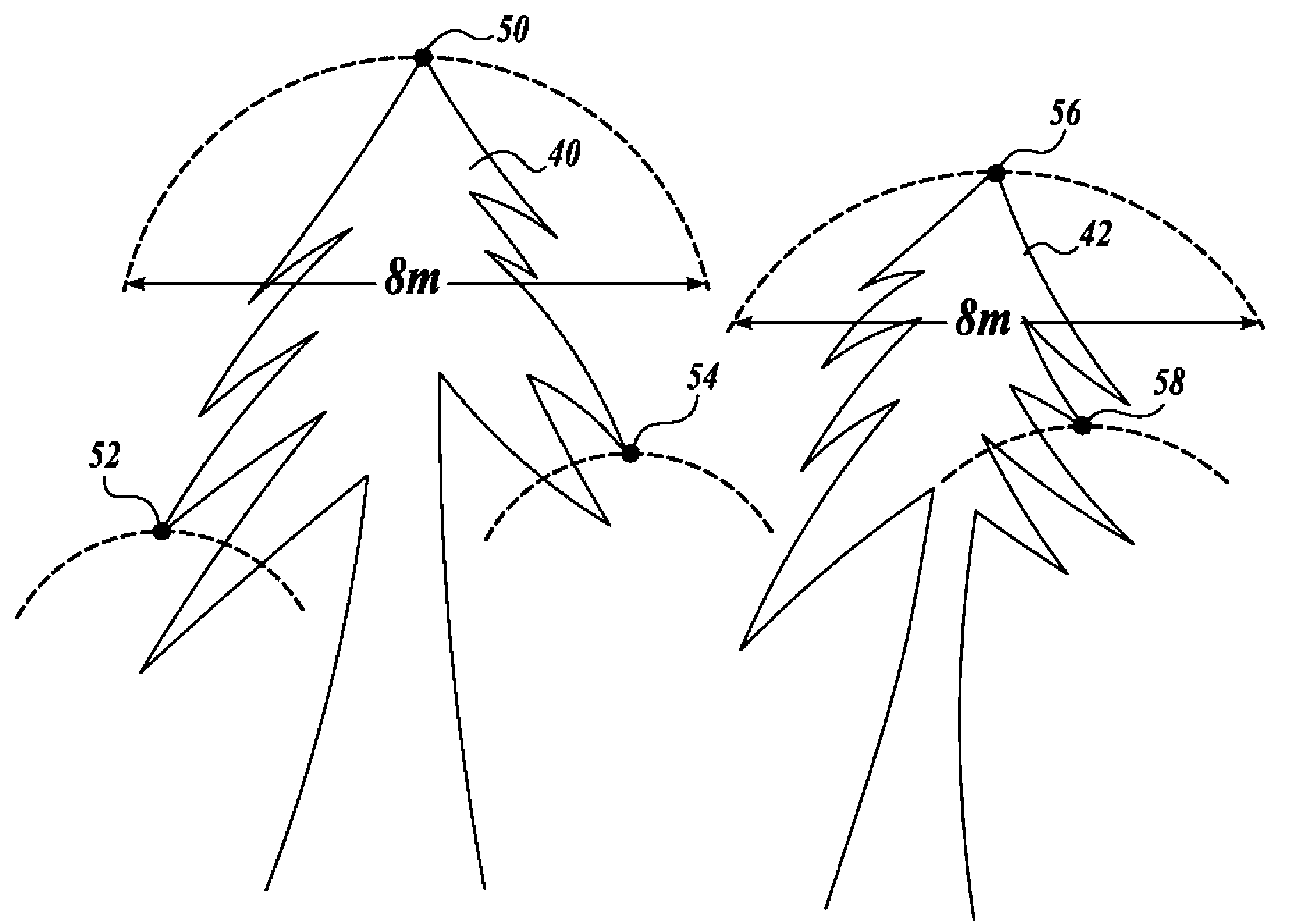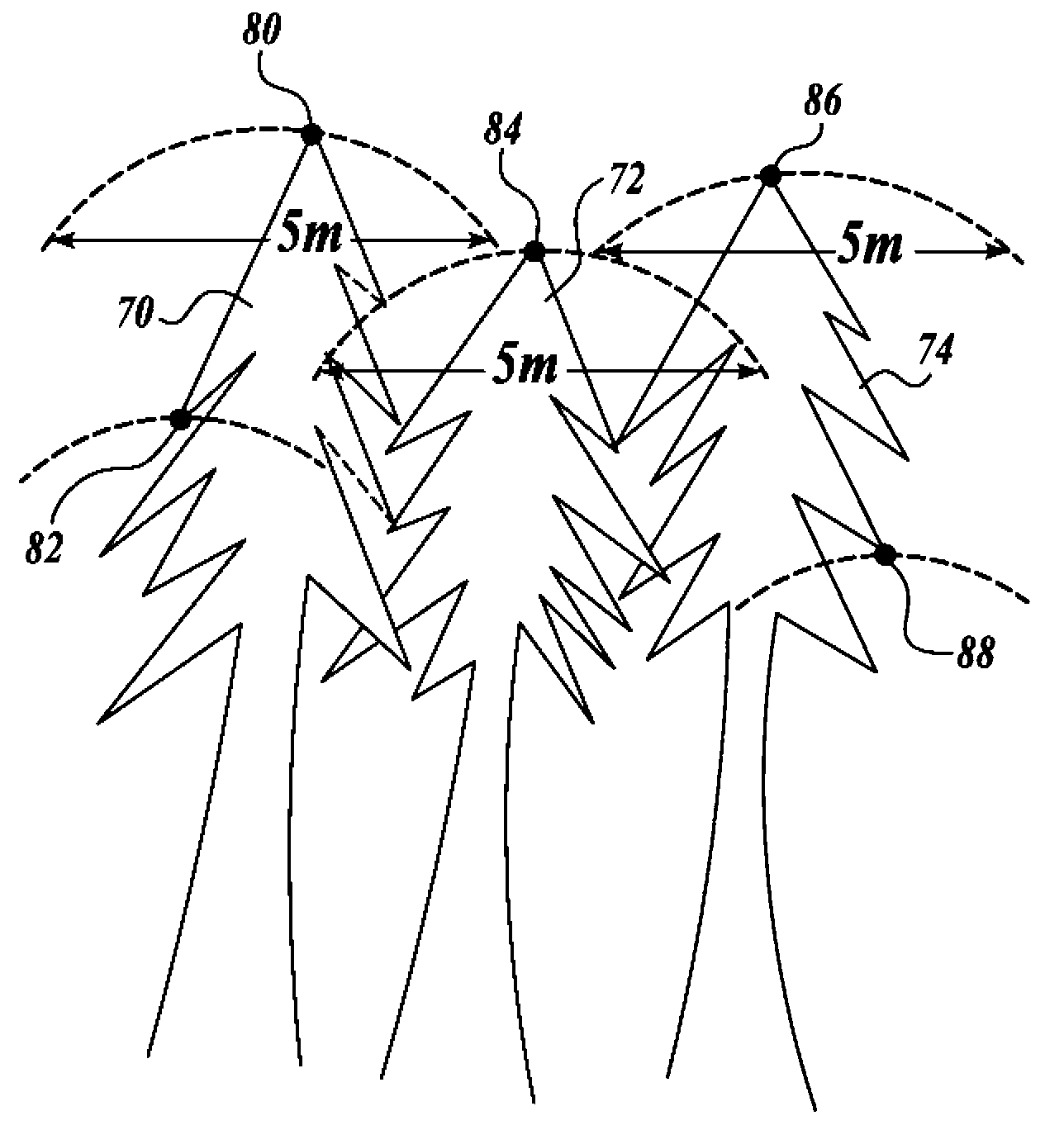Method and apparatus for for analyzing tree canopies with LiDAR data
A data analysis, tree canopy technology, applied in the processing of LiDAR data to analyze the tree canopy field in the forest, can solve the problem of underestimation of the number of trees, overestimation of the number of trees, etc.
- Summary
- Abstract
- Description
- Claims
- Application Information
AI Technical Summary
Problems solved by technology
Method used
Image
Examples
Embodiment Construction
[0019] As will be appreciated by those skilled in the art of remote sensing, LiDAR data is typically obtained by flying an aircraft, such as an airplane, helicopter, etc., in a series of parallel paths over a geographic area. The aircraft carries a LiDAR emission and detection unit that emits a series of laser pulses in a repeating back and forth scanning pattern. Some of the laser pulses are reflected back to the LiDAR detection unit in the vehicle. By knowing the position, altitude and velocity of the aircraft as well as the time between transmission and detection of the laser pulse and the angle at which the pulse was detected, the three-dimensional coordinates for each detected laser pulse can be determined and stored in a computer accessible read memory. In some cases, the intensity of each reflected laser pulse is also detected and stored. The three-dimensional coordinates of the reflected laser pulses form LiDAR data that is analyzed to determine information related t...
PUM
 Login to View More
Login to View More Abstract
Description
Claims
Application Information
 Login to View More
Login to View More - R&D
- Intellectual Property
- Life Sciences
- Materials
- Tech Scout
- Unparalleled Data Quality
- Higher Quality Content
- 60% Fewer Hallucinations
Browse by: Latest US Patents, China's latest patents, Technical Efficacy Thesaurus, Application Domain, Technology Topic, Popular Technical Reports.
© 2025 PatSnap. All rights reserved.Legal|Privacy policy|Modern Slavery Act Transparency Statement|Sitemap|About US| Contact US: help@patsnap.com



